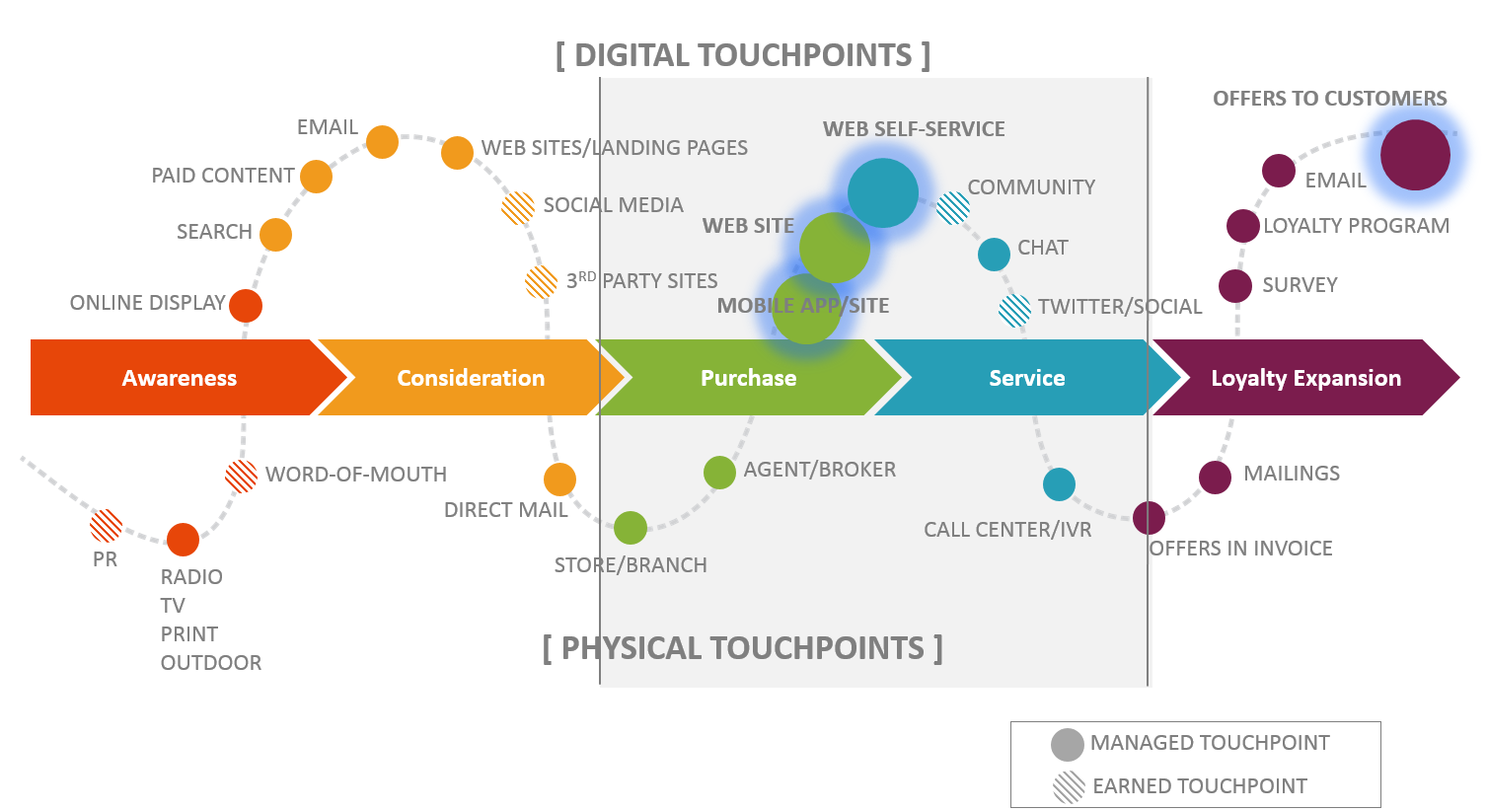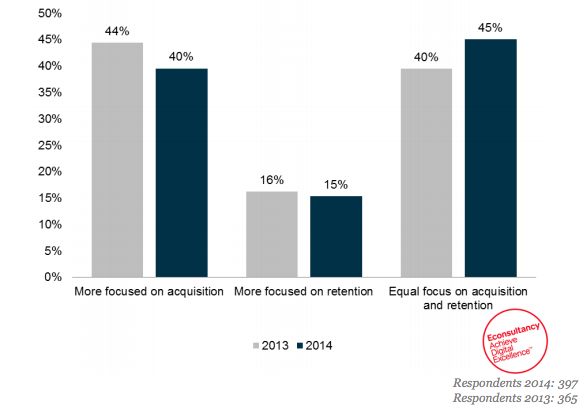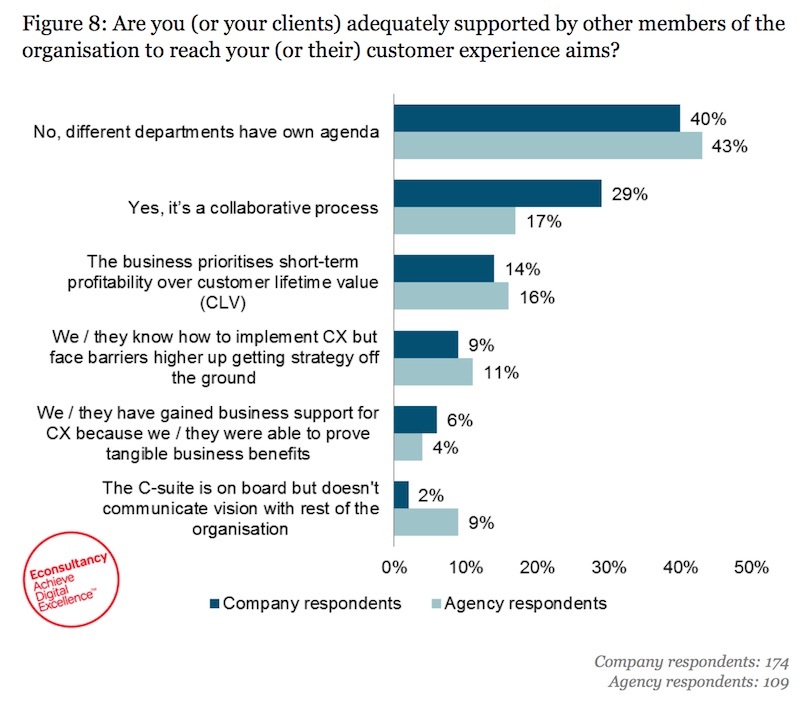I cringe when I hear Marketing should own the customer experience.
Two recent reports appear to back up this claim though.
A report from the Economist Intelligence Unit and Marketo revealed 86% of CMOs and senior marketing executives believe they will own the end-to-end customer experience by 2020. Walker Info released a report that says by 2020, customer experience will become the key brand differentiator.
CMO’s shouldn’t think that because these reports might allude to it, that customer experience belongs in Marketing.
There are key reasons that Marketing should not own Customer Experience
1. Marketing participates in only a small piece of the entire customer journey.
When a brand reaches out to talk with a customer, the interaction is usually with Customer Service or Sales. Marketing isn’t involved. In fact, look at the following graphical depiction of touch points coming together to form a customer journey.

credit: Crownpeak
Marketing is involved in the pre-purchase phases of the journey, but not so much in the post-purchase phases. There are many touch points across an organization. The CMO would have to align activities across the entire business.
2. Marketing’s prime focus is still on acquisition, not post-purchase activities.
According to the recent State of the Conversation report from Corporate Visions and Demand Gen Report, approximately 66% of B2B companies dedicate less than 20% of their marketing budgets to customer retention and upsell/cross-sell activities.
Target Marketing’s 2017 Media Usage Survey is similarly shocking. More than half of respondents are increasing their acquisition budgets vs. a third of respondents increasing retention spending.
Even Forrester notes that marketers obsess over acquisition. It still found that marketers prioritize acquisition over nurturing and deepening relationships with customers.
The root of a lot of this starts at the top. Investors push for acquisition. And that trickles down to the marketing budget. According to venture capitalist, Tomasz Tunguz, marketing spend on customer acquisition is the better way to build value for venture-backed startups than upselling existing customers.
Marketing's prime focus is still on acquisition, not post-purchase activities Click To TweetThings haven’t changed much either. Econsultancy reported three years ago that acquisition was still the dominant proportion of respondent budgets.

This is very sad and shocking news.

Sad and shocking, indeed, considering customer growth occurs in the post-purchasing activity of a business and, according to Bain, it costs approximately seven times more to get a customer than it does to keep one.
3. Customer Experience tends to get siloed in Marketing.
When Customer Experience sits in Marketing, its activities are not aligned with the activities of other customer-facing groups of a company. Lack of integration across the company results in disjointed and inconsistent messages to the customer. There is no way a customer can have a consistent experience across channels. This impedes corporate growth. Thus, customers and companies suffer.

According to a recent Econsultancy report, 40% of marketers admit that they do not receive adequate support from other members of the organization and that different departments have their own agenda. If different departments have different agendas, that creates animosity between departments and kills morale. And, if employees aren’t happy, why would customers be?
If Marketing shouldn’t own the customer experience, who should?
The question isn’t who, but where is customer experience located at your company? Is it at the center?
Companies who want to be customer-centric must unite people and processes (inputs) with appropriate measurements (outputs) to generate the best outcomes.
Companies who want to be customer-centric must transform. And, the transformation must start at the top. When the CEO champions and drives customer experience, the company is successful.
There is now support for this from a recent Genesys study:
According to the research, 58% of companies with a high degree of profitability relative to their rivals report that, ultimately, the CEO has ownership of customer experience management.
While the CEO champions customer experience throughout the company, the CEO needs a conduit to execute on this vision.
Enter the Chief Customer Officer.
The Chief Customer Officer is Vital to Your Business
The CCO Council came up with the Chief Customer Officer definition a while ago:
“an executive who provides the comprehensive and authoritative view of the customer and creates corporate and customer strategy at the highest levels of the company to maximize customer acquisition, retention, and profitability.”
The Chief Customer Officer (CCO) is vital to your business for two key reasons.
The CCO is the master customer experience uniter
Let’s not confuse uniting with owning.
The CCO doesn’t own the customer experience. The CCO unites the leadership team that helps drive customer experience.
Uniting the C-suite is necessary because customer experience travels across the organization. Thus, it is vital that organizations take a centralized approach with customer experience.
For a customer to have an omnichannel experience, all teams must have the same goal and row in the same direction to offer a consistent message across all channels. The CCO ensures that teams row in the same direction with one unified viewpoint. And that people, processes, and measurements all support this viewpoint to deliver the experience that the customer wants.
Because the CCO handles uniting all silos, the CCO position cannot live in Marketing but be under the CEO. The CCO must have a seat at the executive table and help develop corporate strategy.
In Gartner’s CMO Spend Survey 2016-2017, of 86% of the companies surveyed, 41% said the CCO reports to the CEO.
It is the CCO who
- puts the CEO’s viewpoints into action
- educates everyone in the C-suite why the company must be customer-centric – in fact, the CCO can even speed up a company’s transformation to customer centricity
- creates the customer experience framework
- ensures that leadership to the front lines are consistently living up to a common understanding of customer centricity in their behaviors and actions so the entire company is delivering on its brand promise
The CCO is the chief customer advocate
The CCO ensures that the customer is central to the company. In fact, the CCO represents the customer in the C-suite.
The customer owns your brand. If you want to drive growth, you need to build customer lifetime value. To build customer lifetime value, you need to integrate the customer into every aspect of your business.
In PwC’s 2016 Global CEO survey, 90% of respondents said customers have the biggest impact on strategy.
It is the CCO who leads the effort to get the customer viewpoint into all aspects of the business.
The CCO engages with the customer to understand their journey. They collaborate with them to help them create value. A CCO must know the customer so well that they are able to guide the company in a new way of thinking and acting about the customer.
This is important so the company builds itself around the customer.
The CCO enables curiosity and creativity in the organization so it can deliver even more value to customers.
They direct the development of a voice of the customer program, so the customer’s voice is heard and actionable insights from customer feedback are integrated into corporate processes and culture to enhance experiences.
And, the CCO makes sure that employees understand customer experience efforts and are engaged in the process. After all, engaged employees result in engaged customers.
If companies are serious about customer lifetime value and corporate growth, then they’ll recognize the value the CCO role holds. And, they will create the position immediately.


No comments yet.